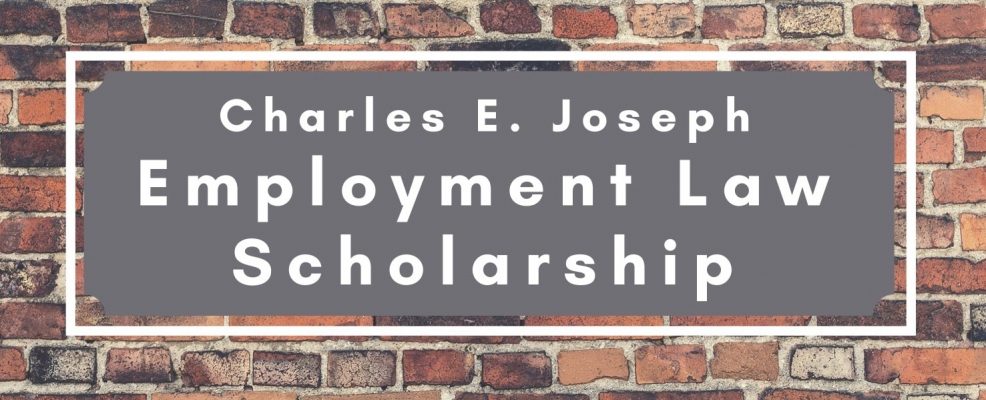
Retaliation and Reporting in the Workplace
July 2, 2024
By Jeff Harris
The Law Students on Workers’ Rights series publishes essays from current and incoming students at some of the top law schools in the country. These essays, submitted for the Charles E. Joseph Employment Law Scholarship, address the question “What are the biggest challenges facing workers’ rights in the future?”
Often people forget that FMLA, the EEOC, the Civil Rights Act, and other laws and agencies had to be created because employers refused to self-police. As an upper-level manager working in blue collar trades my whole career, I have always seen a lack of concern about the individual. Even with many protections and laws having been in place for decades, the protections and understanding of them have been missing from the cultures of many organizations.
This lack of cultural focus will continue to be the biggest challenge to workers’ rights in the future. Today’s culture seems to hinge on pressures to not report and issues being viewed as non-productive, or sensitive reactions to tongue-in-cheek comments. According to the Harvard Business Review, 90% of women are affected by sexual assault and harassment in some industries and discrimination of protected classes is experienced by 61% of US employees, but reporting rates are extremely low. Only 30% of those who experience harassment due to their protected class make an internal report.
The primary reasoning for low reporting is retaliation. Retaliation can be extremely hard to prove, and often the retaliation is a result of the company deeming the claimant as a liability or too sensitive and not focused on their work. As a Director of Risk Management and working very closely with Human Resources, the nature of company processes is to check the legal boxes for the company. They are not designed with the intention of protecting the employee and preserving their interests. A company checking the EEOC boxes, according to the Harvard Business Review, results in only 1% of federal claims succeeding in courts. With this kind of record, it is a very difficult decision to put your livelihood on the line in hopes that some sort of justice will be had.
A problem I noticed in companies that I worked with and through discussions with other professionals is that smaller companies of under 500 employees have fewer resources to be able to devote to processes, channels, and personnel. They are unable to handle any reports or drive the culture change necessary for an inclusive workplace. Tight cashflow and fixed budgets lead to what should be viewed as key to keeping people engaged and productive being seen as unnecessary and wasteful.
At a previous company, I was following up on an employee complaint about an interaction that almost became violent and ended with racial slurs. As my investigation concluded, the interaction was shown to be one sided through witness statements and CCTV. My results email and recommendation of termination to the executive management was met with a stern email from the owner about how I wasted an afternoon chasing people down and talking to them when the two should have just been sat down, told to shake hands, and move on. Treading carefully, I explained that I had followed the EEOC recommendations for handling the claim. I let him know that if I had done what he suggested, it would expose us to major liability and break the trust of the individual involved. Even after the antagonizing individual threatened violence and used racial slurs, the company owner felt that a verbal warning was sufficient, and this was “too good of a worker to throw away over a disagreement.”
I had no other option but to personally apologize to the employee that we failed and offer him the federal channels he could escalate through. He never did. Since there was no intent to change, I left that company shortly after.
Without significant changes in the enforcement and auditing of complaint processes, companies will continue to place less and less focus on employee welfare and will instead focus on profits. To be fair, they are in business to make profit. For this reason, being an engaging and inclusive workplace should NEVER be a priority. Yes, you read that right. It should never be a priority. It should be a core value. Priorities change, but values are intrinsic and part of the overall culture.
Whether it is OSHA, EEOC, FMLA, CRA, or any other law or protective agency, none of it matters when companies are allowed to check the boxes with only a minimal regulatory glance. The biggest challenge that we must face regarding workers’ rights now to make a better future is correcting the perception that protecting your employees is something you have to do and shaping it into a core value that “we are a company who protects and preserves our employees.”
Reflections from Charles Joseph
A majority of workers experience discrimination at work, and yet only a fraction report those cases to their employer. Why? Employers hold many of the cards when it comes to worker rights, as Harris argues in his essay, which dissuades many employees from pursuing their rights.
I created Working Now and Then to give workers information about their rights, including in cases of retaliation, and point them to legal resources. Even when companies fail, informed workers can demand justice.
Jeff Harris is the Director of Risk Control at Joe Bland Construction, a major civil contractor in Austin, Texas. He will join the Cleveland State University College of Law class of 2027 in the fall. Harris is also the winner of the Charles E. Joseph Employment Law Scholarship for 2024. Contact Harris on LinkedIn.
Charles Joseph has over two decades of experience as an NYC employment lawyer. He is the founder of Working Now and Then and the founding partner of Joseph and Kirschenbaum, a firm that has recovered over $140 million for clients.